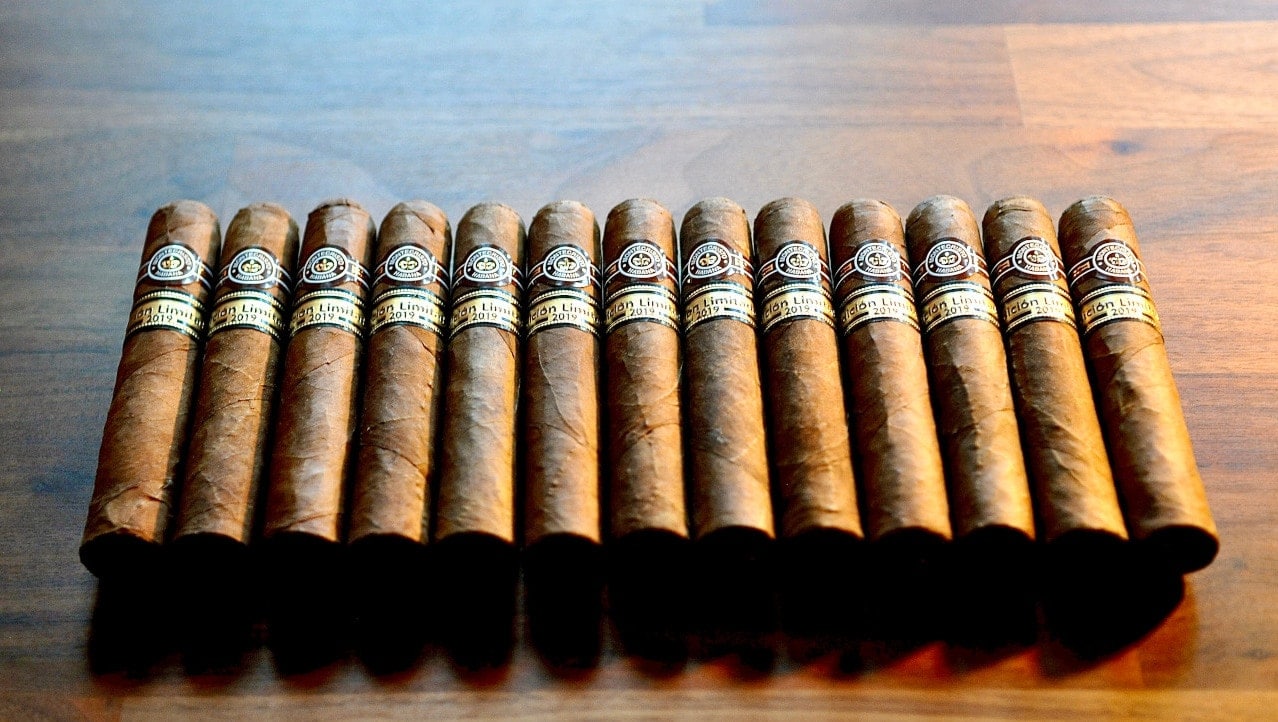There are cigars and then there are Cuban cigars. They are world famous for a very good reason. Tobacco grown on that 109,000 square kilometre island just south of Florida is the best in the world, so the quality starts there. Are Cuban cigars worth it? Manufacturers have been making cigars there since the time of King Phillip II of Spain, in the 16th century.
Related: Why Cuban cigar aficionados love smoking Cohiba cigars the most
Over those centuries, Cuba’s cigar-makers have perfected their art. Hand-crafted, made from 100 per cent natural tobacco. The Cubans have reached a point where they are completely unrivalled among their international peers. Spain, China and France remain the top three markets for Cuban cigars. Habanos S.A., the organization that oversees the state-run cigar industry in Cuba, claimed $531 million in revenues in 2019.
So what makes Cuban cigars special? Let’s break it all down, our cigar 101. (Image up top: Montecristo Limited Edition.)
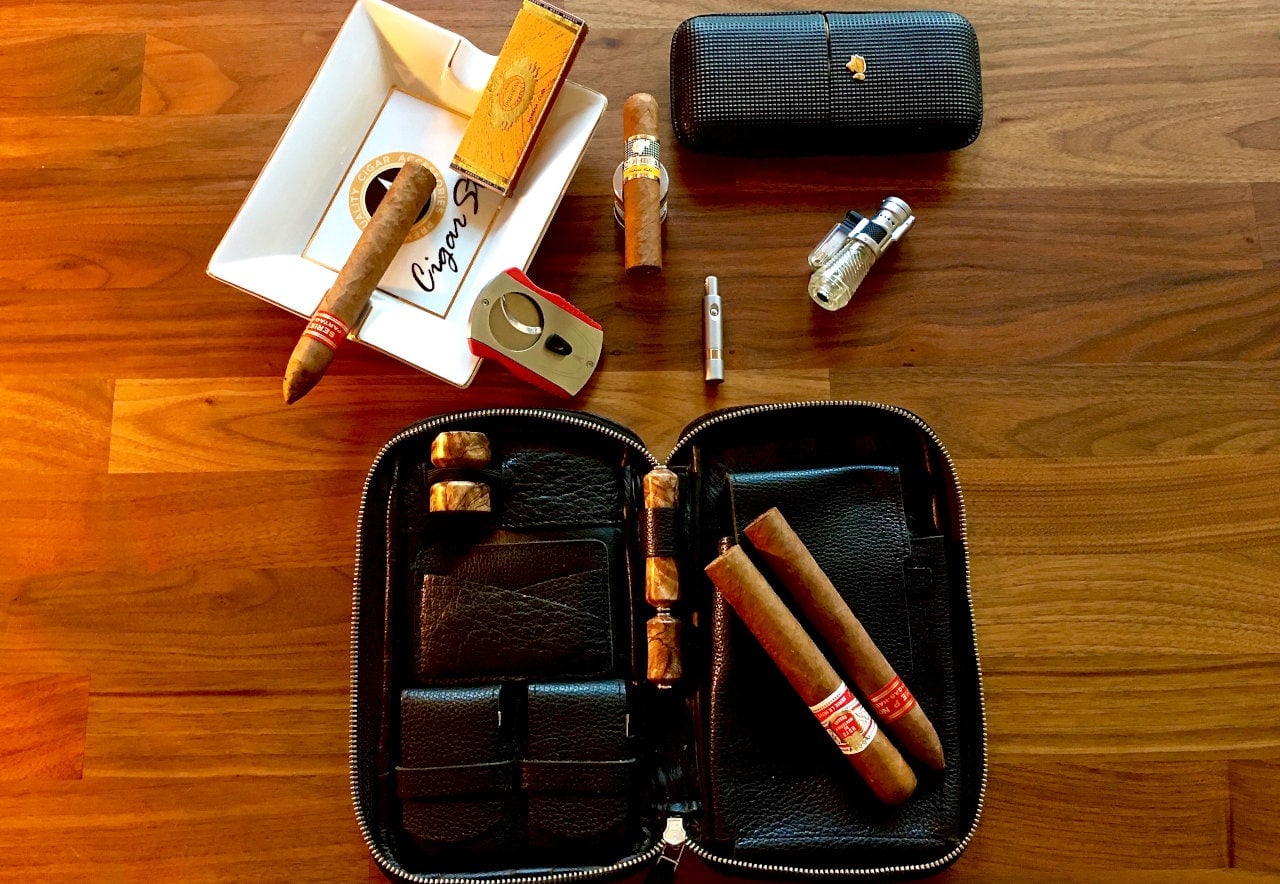
Cuban cigars: Partagas
Cigar guide: The secret behind Cuban habanos
The cigar makers of Cuba may have had hundreds of years to perfect their formulae and techniques. But what exactly does that mean? What is it that they have perfected, that makes their products the most in-demand and expensive in the international cigar market?
What sets Cuban cigars apart is the quality of their materials. Plus the care and attention that goes into making each one. It has been estimated that there are roughly 200 different stages that go into the creation of a single Cuban cigar. Expensive Cuban Cigars are definitely worth it.
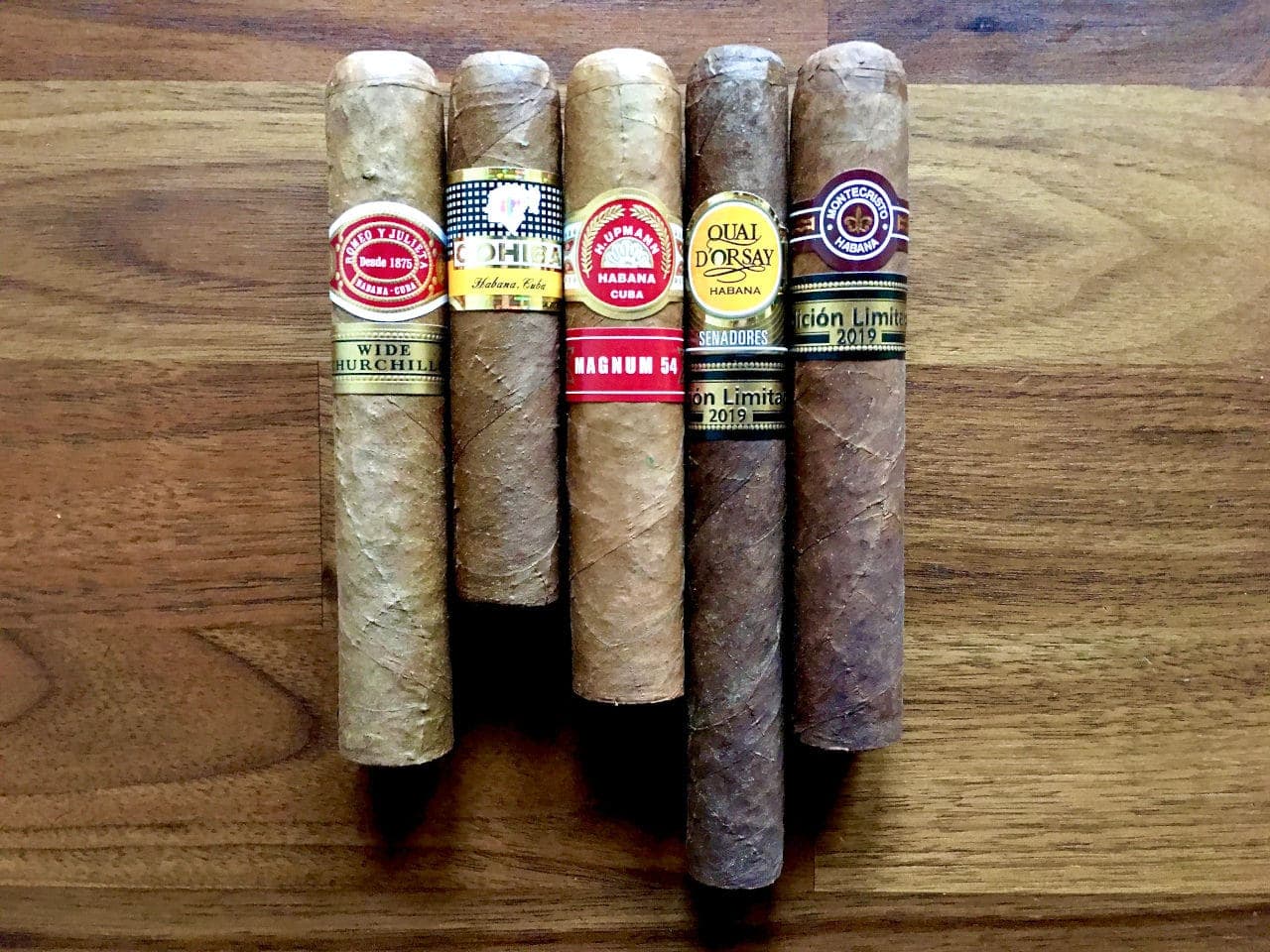
Cuban cigars: Romeo y Julieta Wide Churchill
Another unique fact about Cuban cigars is that they are made of Cuban tobacco only. In contrast, all cigars made elsewhere in the world are made from tobacco blends that include a wide variety of varietals dried and blended in various ways. This gives Cuban cigars their unique taste and aroma.
Therefore the difference between Cuban cigars, and those from anywhere else, is analogous to the contrast between single malts and blends among whisky lovers.
Cigar 101: Understanding the different elements of Cuban cigars
Since the making of Cuban cigars is so complex, it is worth breaking them down into their constituent elements and explaining what makes each of these components so special.
Composition
Like all cigars, the Cuban variety is composed of three different parts, or layers: the wrapper, the binder and the filler. The difference with smoking Cuban cigars is in the materials that are chosen for these three components. That and the methods that are used to create them.
Wrapper
The wrapper is the outer layer of the cigar and is actually the most expensive part. It plays a significant role in determining the character and flavour of the cigar. Different types of wrapper are identified by their colours. Plants whose leaves are to be used for wrappers are grown and fermented separately from other cigar components.
There are seven different shades of wrapper:
- Candela (or Double Claro) – has a slight green tinge
- Claro – tan or light yellow
- Claro Colorado – medium brown
- Colorado, or Rosado – reddish-brown
- Colorado Maduro – brown
- Maduro – dark brown
- Oscuro – black
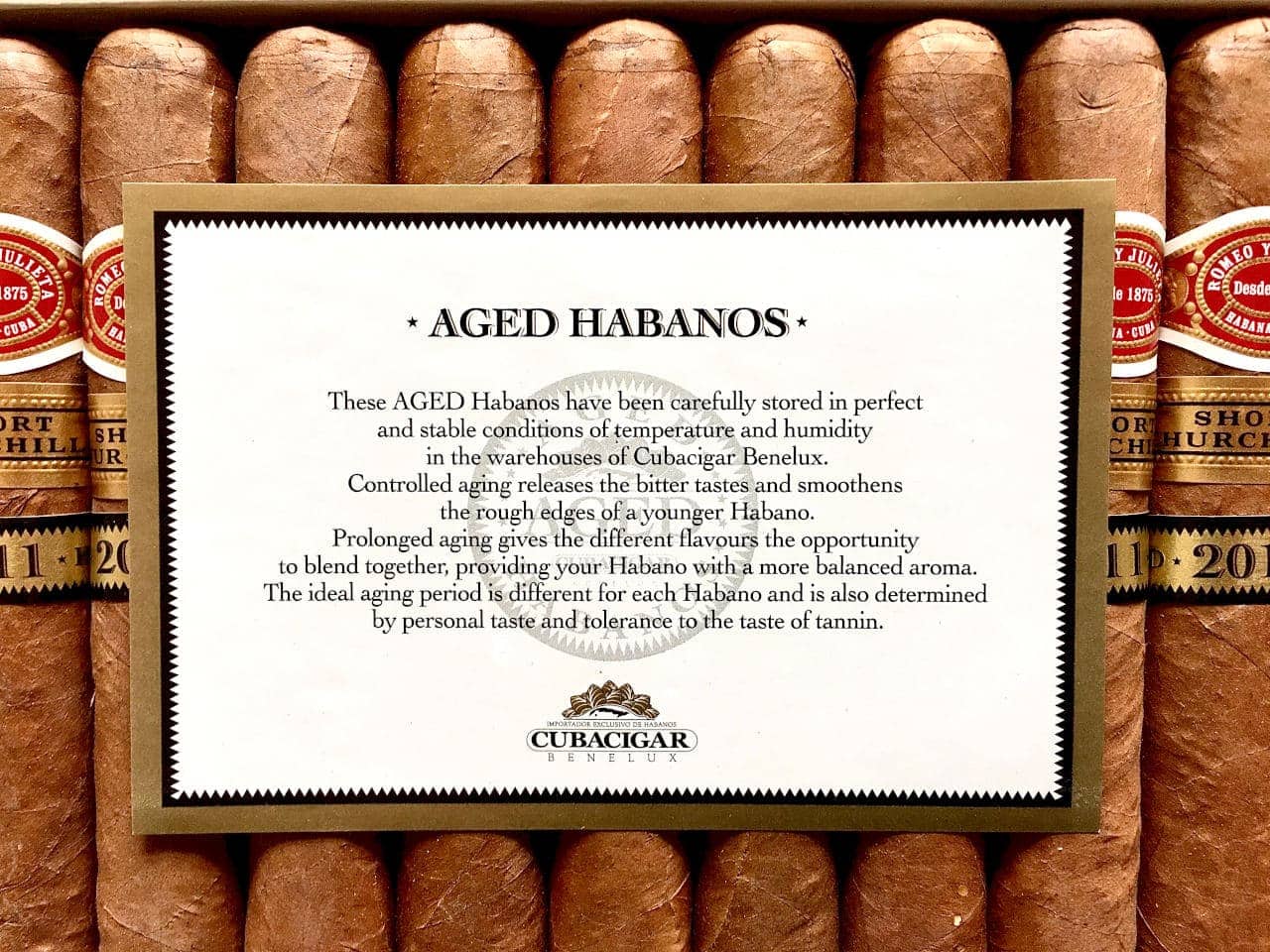
Cuban cigars: Aged Romeo y Julieta Short Churchills
Cuba’s cigar industry produces cigar wrappers of all colours. As a rule of thumb, darker wrappers are sweet. Lighter ones tend towards the dry side. Wrapper leaves need to be of the finest quality and free of marks or blemishes.
The state-controlled Cuban cigar industry has incredibly stringent quality control measures which demand only flawless wrappers. If upon examining the wrapper of a cigar you find any imperfections, you should doubt that it is of Cuban origin.
Binder
The binder is the second layer of the cigar, found just underneath the wrapper. These are made of the leaves from the top part of the plant, which receive more sun than the rest of the leaves. Because of that they are chosen for their durability.
Binder leaves are not required to be as physically perfect as the wrapper. And it is permitted for them to vary in colour, shade and texture. As the name suggests, the primary function of the binder is to bind the filler leaves together.
Filler
The contents of the cigar – the dried leaves inside the wrapper and binder – is called filler. These dried leaves are carefully folded by hand to allow easy passage of air through the length of the cigar.
Cigars must have proper airflow to meet the standards of experienced smokers. If they don’t allow sufficient airflow, they are described as “too tight,” making them difficult to smoke.
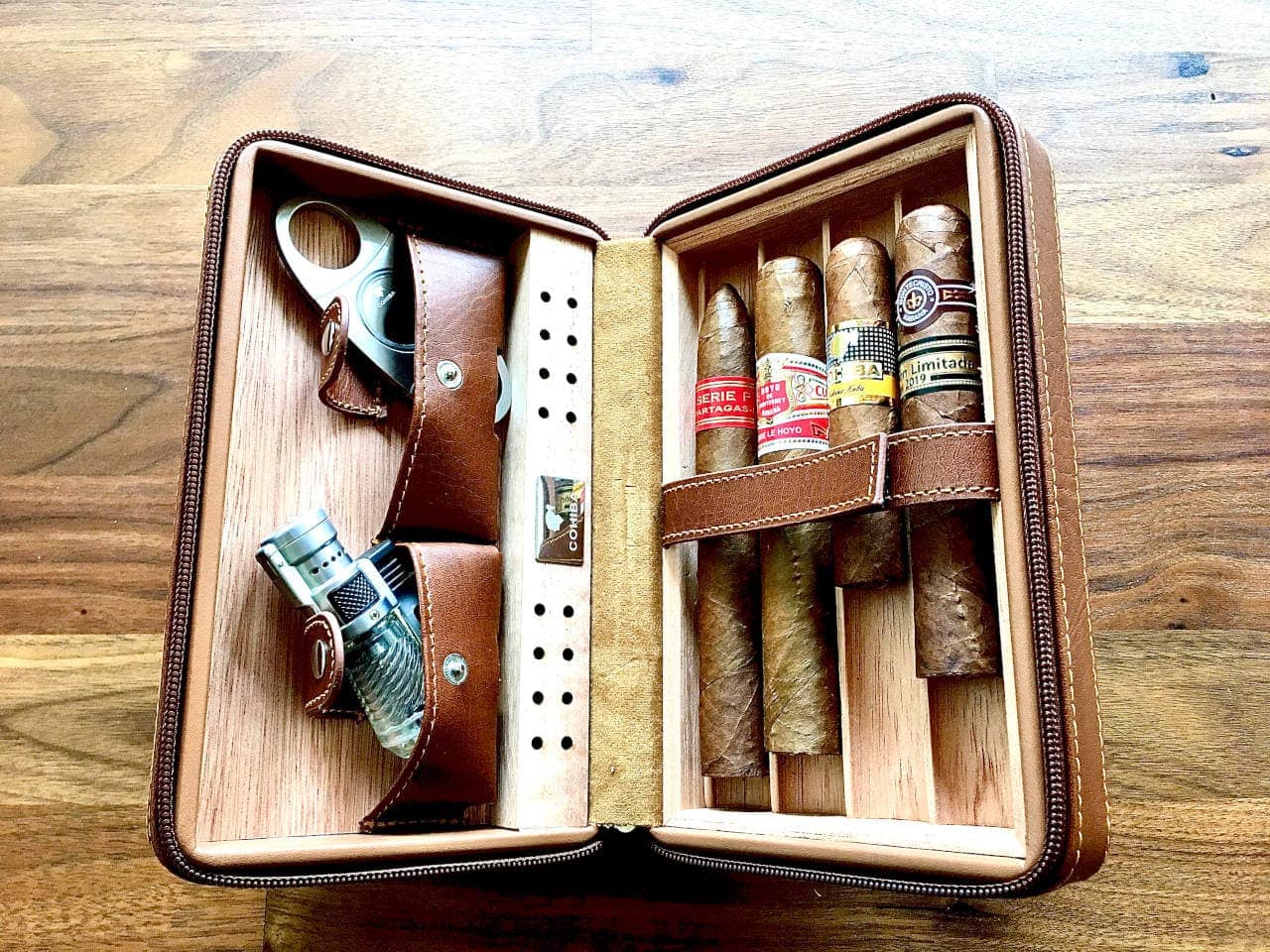
Cuban cigars: Cohiba Siglo I
On the other hand, if the air flows too freely, the cigar could burn too quickly. Here is where the extraordinary skill of Cuban cigar rollers comes into play. The desired airflow depends on the roller’s manual adeptness. Some cigar makers use machine rolling, but never in Cuba. Only the centuries-old hand-rolling method is allowed there, ensuring that the end products are never too tight or too loose.
Filler is composed of three different types of tobacco. There is ligero, from which the cigar gets its strength. Then there’s seco, which adds aroma to the cigar. Finally, there’s volado, which, together with the rolling technique, determines the speed and duration of combustion in the cigar.
Size and shape
You will probably have noticed that cigars come in all shapes and sizes. They can be divided into four general categories in this regard:
Parejo
Parejos are the standard cigar shape. They are cylinders with straight sides, one open end and one end covered with a tobacco leaf cap that must be cut before smoking.
Figurado
The term figurado is a general term that encompasses all irregularly shaped cigars. These include:
- Cheroots: have the same shape as parejos, but are open at both ends
- Torpedoes: straight like parejos but the cap is pointed
- Pyramids: similar to torpedoes, except that they have a broad foot, and then tapers towards the pointed cap
- Perfecto: narrow at both ends and fat in the middle
- Presidente: very similar to parejos, except much bigger, and sometimes with a closed foot
Cigarillo
Cigarillos are shorter and narrower than parejo cigars, but longer and broader than little cigars. The cigarillo is always machine-made.
Little cigars/miniatures
Little cigars resemble cigarettes in shape, size and packaging, and are also filter-tipped.
Smoking Cuban cigars
Cigar smoking is a specific and traditional practice that is very distinct from the way in which cigarettes are smoked. The aim is to draw the smoke into the mouth and savour its taste, rather than inhale it.
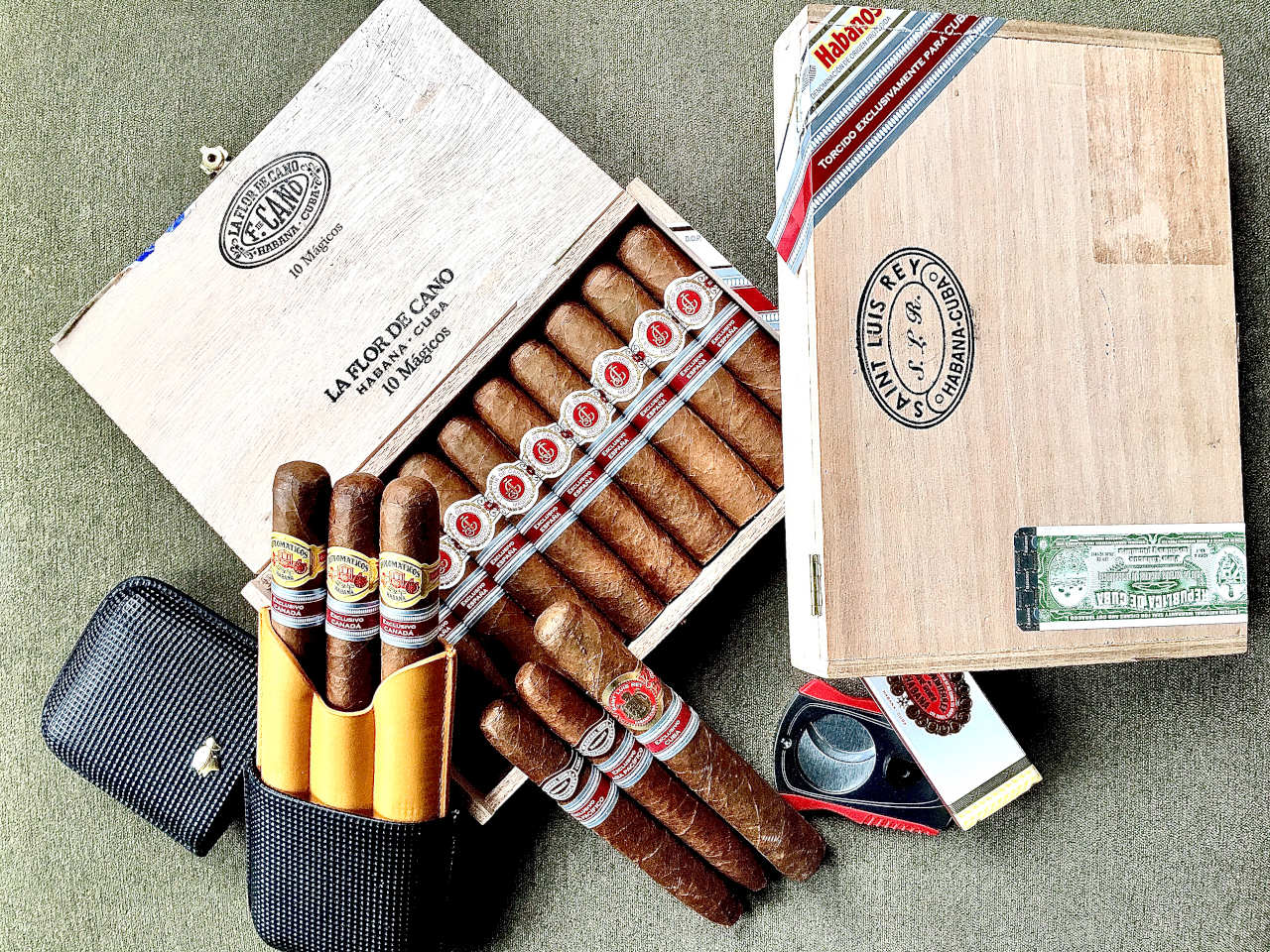
Cuban cigars: La Flor de Cano
Cutting
Like all hand-rolled cigars, Cuban cigars must have their caps cut off so that the smoke can be drawn through their length and into the mouth. Some people bite the caps off, or even use scissors – but these practices are frowned upon. The caps are best removed with a cigar cutter, of which there are two different kinds:
- Guillotine: a straight cutter that removes the entire cap
- V-Cut: cuts a wedge or notch into the cap, rather than removing the entire tip
Lighting
After removing the cap, the smoker places the cigar between the lips at the cap end and lights the cigar at the foot while slowly rotating it. That ensures that it ignites evenly. The flame should come into minimal contact with the tobacco leaves. Torch lighters are thus discouraged, while made-for-purpose gas or fluid lighters are preferred.
Matches may be used. But the flame should only be brought towards the cigar once it has burned past the match head. That will ensure that the chemicals in the head do not contaminate the cigar smoke and adversely affect its flavour.
Flavour
The flavours of cigars are determined by several factors. That includes the tobacco varietals used, the blend of tobacco leaves in the filler, the quality of the wrapper, the age of the tobacco and the ageing method.
Every cigar has its own flavour. And appreciating it is much like wine or whisky tasting, with connoisseurs discerning individual notes. Those are most frequently described with terms such as spicy, sweet, harsh, dry, nutty, woody, among others.
Smoke
Cigar smoke is not intended to be inhaled. Instead, it is drawn into the mouth and held there or swirled around before being exhaled. Smokers sometimes breathe out through the nose so they can enjoy the aroma of the tobacco, as well as the taste. The nicotine content of cigars is exceptionally high.
One good Cuban cigar contains as much nicotine as an entire packet of cigarettes. The nicotine is more readily absorbed through the lining of the mouth, unlike with cigarettes, making inhaling unnecessary.
FAQs about Cuban cigars
Are Cuban cigars worth it?
When it comes to enjoying the cigar smoking experience, most experts will tell you that you can’t do any better than Cuban. However, it is not certain how much of this is just hype. That’s in part fuelled by the fact that Cuban cigars have been so difficult to come by since various Western states placed an embargo on trade with Cuba in the 1960s.
Cuban cigars thus acquired a “forbidden fruit” appeal that may have led to a distorted perception of their true quality.
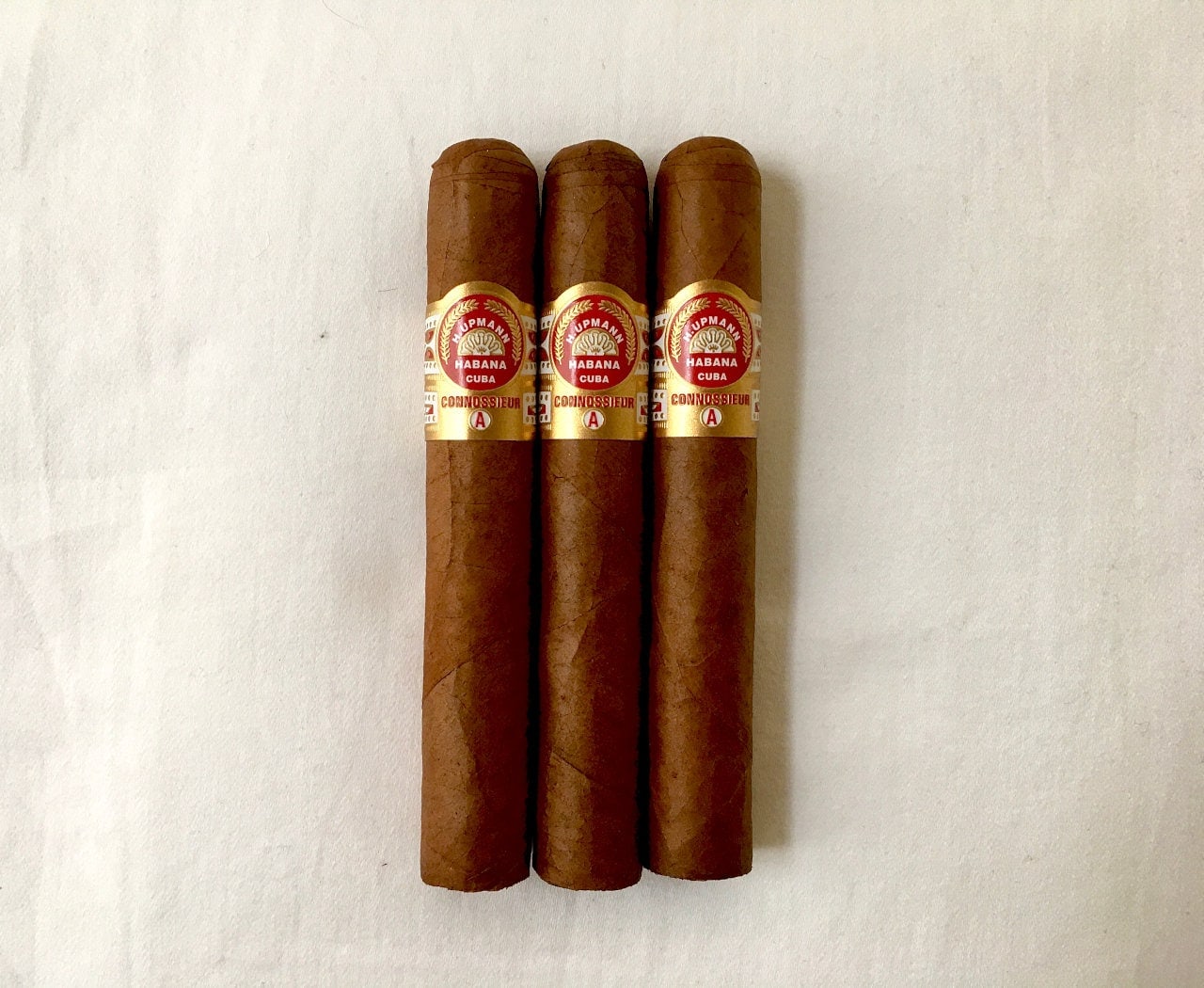
Cuban cigars: H Upmann Connoissieur A
Make no mistake, Cuban cigars are excellent. And the painstaking production process does go some way towards justifying their prices. Having said that, there are premium cigars from other locations which are good as well. Countries such as Nicaragua, Honduras and Dominican Republic are a few examples.
All that being said, the cost of Cuban cigars is not all that prohibitive. Unless you’re going for particularly rare brands, it might be a difference of say, $12 between a Cuban cigar and one from a different location. Which is not a heavy price to pay if you want quality. Just remember that, unless you develop a specific taste for Cuban cigars, you can always get fine cigars from elsewhere. And you can often get one at a slightly lower price.
Are Cuban cigars illegal in 2020?
It is still illegal to sell or buy Cuban cigars within the United States. However the rules have been relaxed to allow Americans to purchase cigars in Cuba and bring them home, as long as they are only for personal use. In the UK and Canada, however, the embargo does not apply. So it is legal to buy Cuban cigars in shops or to import them.
Do Cuban cigars have nicotine?
Should cigars stay in cellophane or in a humidor?
This is a surprisingly common question. The answer is yes and no – there are benefits either way storing cigars in a humidor. Keeping the cellophane on the cigar can give it an extra layer of protection against physical damage. Cellophane is also an accurate indicator of a cigar’s age.
As a cigar gets older, its oils and sugars are released to the surface, staining the cellophane and resulting in the famous “yellow cello”. You can use this to determine if a cigar is well aged.
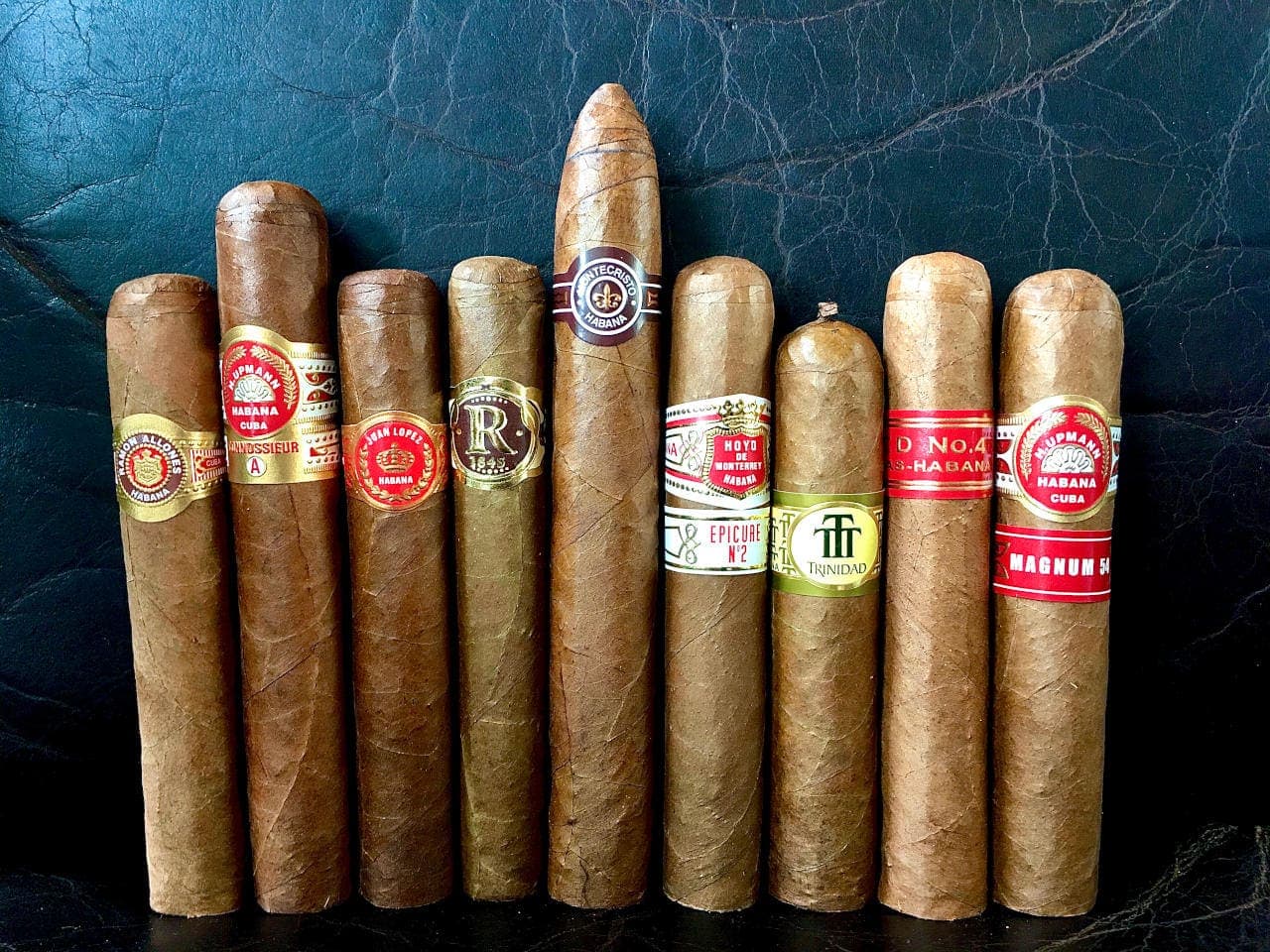
Cuban cigars: Robaina
On the other hand, if you remove the cellophane, the cigar will age faster. Removing the cellophane wrapping can also promote the development of plume.
Plume is the name given to the appearance of oils and sugars that have risen to the surface of the wrapper and crystalized. This only happens after a long period of ageing. It’s considered a good sign that the cigar is ready to smoke. With the cellophane on, plume development may be slowed down, or may not happen at all.
What is the world’s most expensive cigar?
The world’s most expensive cigar is not a Cuban product. It’s a Gurkha cigar called the Royal Courtesan.
These cigars are made from rare Himalayan tobacco that is watered only with pure Fiji water and then infused with Remy Martin’s Black Pearl Louis XIII cognac (which costs about £120,000 per bottle). The Royal Courtesan goes through an elaborate production process. Each finished cigar is wrapped in gold leaf, with a diamond-studded band and sold at just over $1.7m CAD apiece.
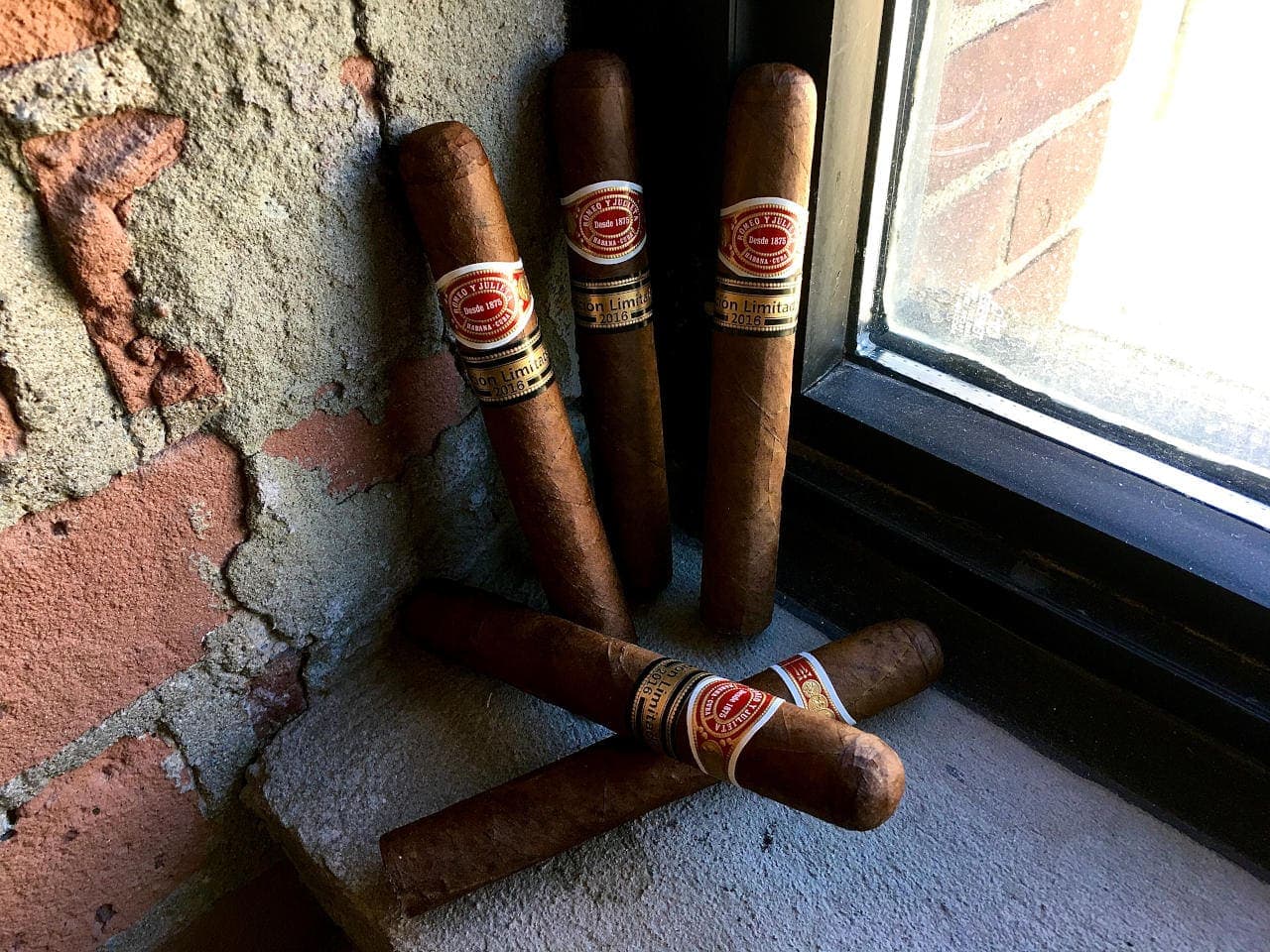
Cuban cigars: Romeo y Julieta Aged Short Churchill
Cigar smoking is a hobby that is associated with wealth and refinement. And Cuban cigars are among the best-loved varieties available (Humidor Cabinet, Gurkha Royal Courtesan Cigar, Fidel Castro Cigar). However, there is a rich and multifarious world awaiting anyone who wishes to delve deeper into this luxurious pastime.
Keep up with the latest luxury news with our luxury living blog and guides!

Mark Keast has been a journalist for three decades, starting out as a sports writer and editor for one of Toronto’s largest daily newspapers. Recently he has moved into writing on luxury cars, travel, and Toronto luxury real estate. He owns real estate in downtown Toronto as well, so there’s a vested interest there. Mark spends a lot of his work time connecting with realtors and developers across Canada, staying on top of industry developments.
Check out his stories, and email him direct at mkeast@regardingluxury.com



